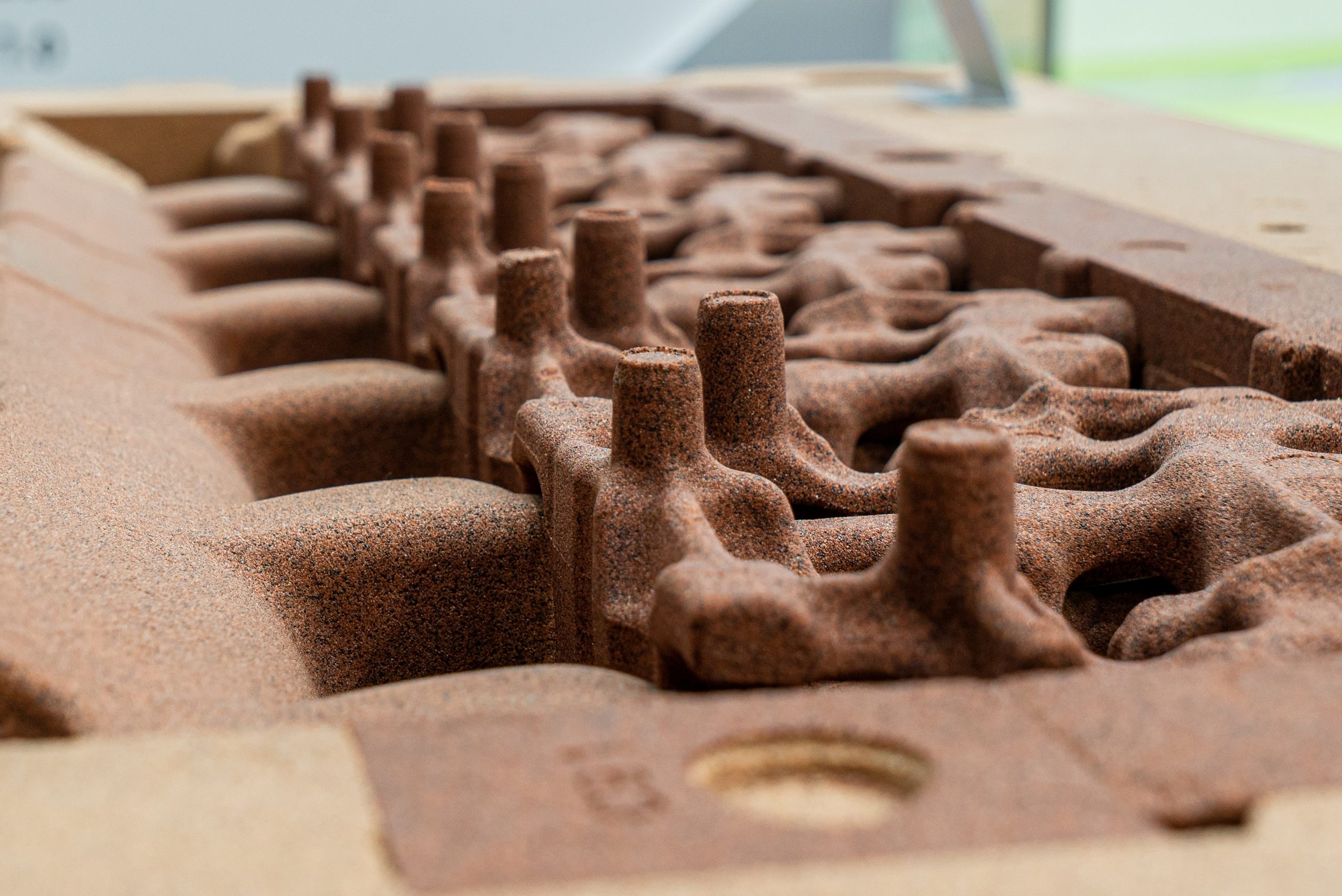The investment casting process, also known as precision casting or lost-wax casting, involves the forming of a ceramic mold from a wax pattern. Wax patterns are made in the exact shape of the item to be cast. Refractory ceramic is used to coat this pattern. Once the hardened ceramic material has been turned upside down, the wax melts and drains out. Hardened ceramic shells become disposable investment molds. The molten metal is poured into the mold and allowed to cool. The metal casting is then removed from the spent mold. The process of “investing” (enclosing) a pattern with refractory materials is called investment casting. The advantages of investment casting over other molding methods include fine details and excellent surface finishes as-cast. Castings with thin walls and complex internal passageways are also possible. Investment casting does not require a draft, as does sand casting.
The process quality can produce net shape or near net shape castings, resulting in significant material, labor, and machining cost savings for the customer. It can be made from most common metals, such as aluminum, bronze, magnesium, carbon steel, and stainless steel. Turbine blades, medical equipment, firearm components, gears, jewelry, golf club heads, and many other complex machine components are manufactured with investment casting.
A Description Of The Investment Casting Process
There are several steps involved in the investment casting process: die construction, wax pattern making, ceramic mold creation, pouring, solidification, shakeout, and cleanup.
Metal die construction
In investment casting, the wax pattern and ceramic mold are destroyed, so each casting requires a new wax pattern. The wax patterns must be manufactured from molds or dies unless the investment casting is being used to produce a very small volume (such as for artistic work or original jewelry).
When calculating the size of the master die, it is important to take into account the shrinkage of the wax pattern, the shrinkage of the ceramic material invested over the wax pattern, and the shrinkage of the metal casting itself.
Wax pattern production
A wax pattern is always necessary for every casting; each casting needs a wax pattern.
The mold or die is filled with hot wax and allowed to solidify. Any internal features may require cores. The wax pattern is an exact replica of the part to be manufactured. Wax is used instead of molten metal in this method, which is similar to die-casting.
Mold creation
The wax mold is equipped with a gating system (sprue, runner bars, and risers). Several wax patterns are attached to a central wax gating system in order to form a tree-like assembly for smaller castings. In order to introduce molten metal into the mold, a pouring cup is normally attached to the end of the runner bars.
An assembled “pattern tree” is dipped into a slurry of fine-grained silica. Each time it is dipped, more refractory slurry is added. As the refractory coating reaches the desired thickness, it is allowed to dry and harden; the dried coating forms a ceramic shell around the patterns and gating system.
It is determined by the size and weight of the part being cast, as well as the pouring temperature of the metal. Walls are typically 0.375 inches thick. (9.525 mm). The hardened ceramic mold is placed in an oven and heated until the wax melts and drains away. As a result, a hollow ceramic shell is created.
Pouring
A ceramic mold is heated between 1000°F and 2000°F (550°C and 1100°C). Heating further strengthens the mold, removes any remaining wax or contaminants, and evaporates water from the mold material.
While still hot, molten metal is poured into the mold – liquid metal flows into the pouring cup, through the central gating system, and into each mold cavity. Metal flows easily through thin, detailed sections due to the preheated mold. As the mold and casting cool and shrink together, the casting has improved dimensional accuracy.
Cooling
After the metal has been poured into the mold, it cools and solidifies. The time it takes for a mold to cool into a solid state depends on the material used and the thickness of the casting.
Shakeout
As the casting solidifies, the ceramic molds break down, and the casting can be removed. Typically, ceramic molds are broken up manually or with water jets. Using methods such as manual impact, sawing, cutting, burning, or cold breaking with liquid nitrogen, the individual castings are separated from their gating system tree.
Finishing
Grinding or sandblasting operations are typically used to smooth the part at the gates and remove imperfections. Depending on the metal from which the casting was poured, heat treatment may be employed to harden the final product.
The Best Time To Use Investment Casting
Because of its complexity and labor requirements, investment casting is a relatively expensive process – although the benefits often outweigh the costs. Almost any metal can be investment cast. Typically, investment cast parts are small, but the process can be effectively applied to parts weighing 75 pounds or more.
As-cast investment casting can produce complex parts with excellent surface finishes. Because ceramic shells break away from the part upon cooling, investment castings do not require a taper to remove the components from their molds. With this production feature, castings with 90-degree angles can be designed without shrinkage allowance, and without the need for additional machining. Investment casting produces parts with superior dimensional accuracy; net-shaped parts can often be produced, and finished forms often do not require secondary machining. To produce wax patterns, each unique casting run requires a new die. Investment casting tools can be quite expensive; tooling costs can range from $1000 to $10,000, depending on their complexity.
For high volume orders, the time and labor saved by eliminating or reducing secondary machining easily offset the cost of new tooling. Investments in small casting runs are less likely to be recouped. If you need to make more than 25 parts, investment casting is a logical choice.
It usually takes 7 days for a wax pattern to become a complete casting; the majority of that time is spent creating and drying the ceramic shell mold. Castings can be produced more quickly at some foundries that have quick-dry facilities. The labor-intensive nature of investment casting affects more than just cost. Because investment casting foundries have limited equipment and production capacity, lead times are typically long.







